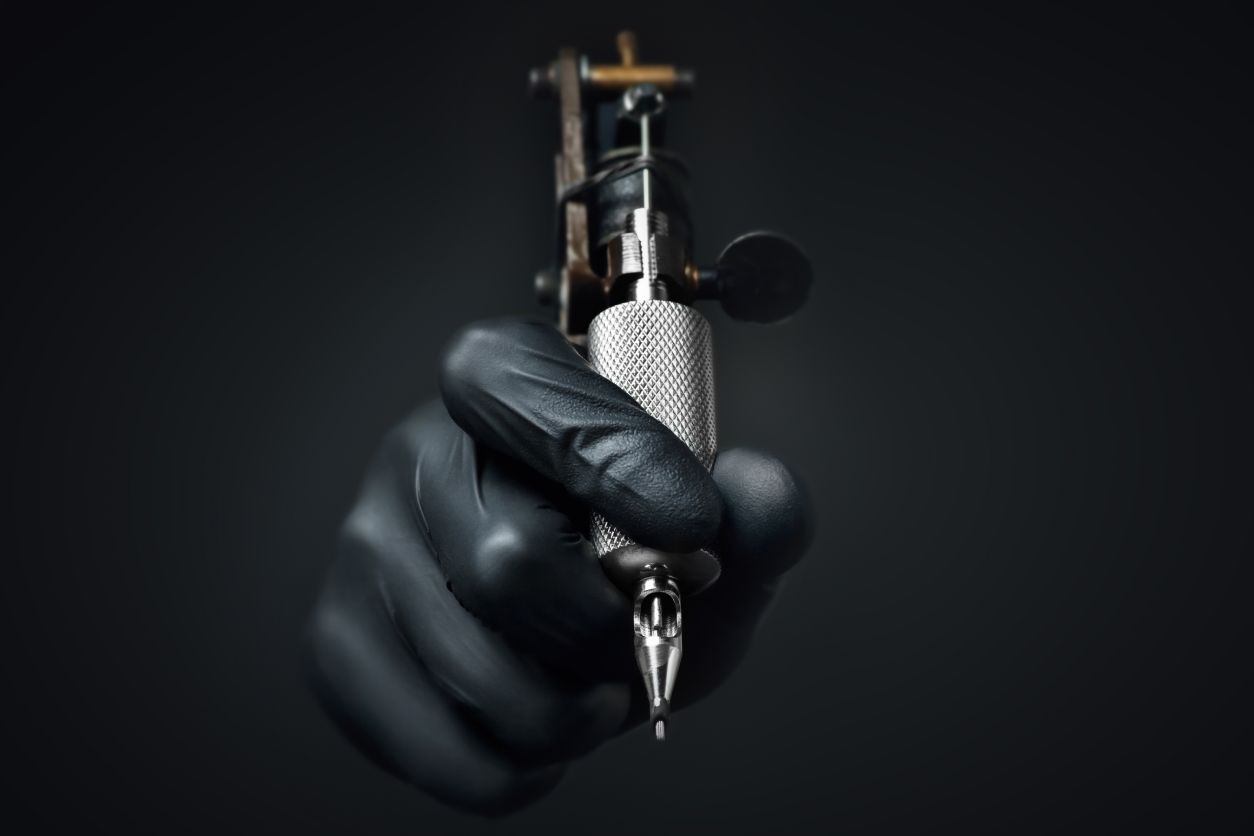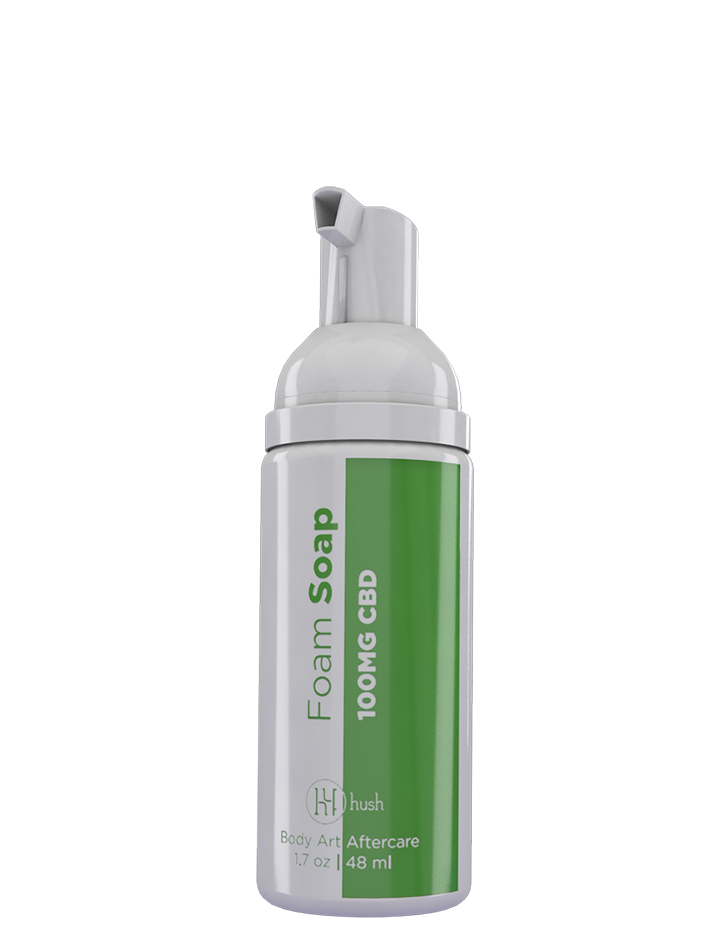
$14.99
If you’re interested in pursuing a career as a tattoo artist, there’s a lot to learn. Don’t let that scare you off.
It’s important to understand what you’re getting yourself into and learn how to best apply your creative skills to the ancient art of tattooing. Here’s what you need to know about tattooing for beginners.
Tip #1: It’s Different From What You’re Expecting
Even if you’re the best artist on the planet, transitioning from cotton canvas to a human canvas will be a big adjustment. There is no flat surface on the body, and the body is always moving. The human body feels pain and has opinions regarding what will be permanently etched into it.
The technique of creating a beautiful sketch or painting and the technique of creating the perfect tattoo are very different. You’ll need to change your approach a lot, and it will take some getting used to. You may not get it right away, so practice is extremely important.
Get all of your bad tattoos out of the way on practice skin, and don’t give up if you don’t get that lightbulb moment for a while. You mastered traditional art, and you’re perfectly capable of mastering tattoo art if you apply the same level of dedication.
Tip #2: The Sanitation Stuff Is Really Important
Tattooing is equal parts a creative venture and a medical procedure. Even if you’re the best artist in the world, not a single client will sit in your chair if they’re worried about getting an infection.
Needles mean open wounds. Open wounds mean blood, bacteria, and pathogens. It’s absolutely essential to follow sanitation protocol and best medical practices down to the letter. Hygiene is one of the most important parts of the tattoo process. Read the guidelines every day if you have to.
Licensing requirements vary from state to state, but every state requires tattoo artists to take some sort of course on wound care, first aid, and pathogens. Memorizing this and making the best practices second nature from the beginning of your tattoo career will set you up for success.
Tip #3: Color Theory Is Trickier Than You Think

Remember that box of 96 crayons you got when you were in school? That thing was awesome! You had every color you needed to create whatever your heart desired. It’s a shame that tattoo ink doesn’t work the same way.
Tattoo ink is a lot more expensive than crayons, so you probably won’t have hundreds of colors in your arsenal. You’ll need to learn to mix and match colors perfectly and how to modify or select shades for your client’s skin tone.
This process is an art all on its own, and it’s why there’s so much overlap between makeup artists and tattoo artists. Both need to have an excellent knowledge of color theory to get the job done.
A great way to practice color theory is to try the same shades of ink on different tones of practice skin, from the lightest possible tone to the darkest possible tone. You’ll get a better idea of how different colors look and blend together in a variety of settings.
Tip #4: Good Equipment Is Worth the Investment
If you’re new to tattooing, you’re probably thinking it’s a smart idea to start with budget equipment. It probably isn’t. Most cheap tattoo equipment doesn’t work reliably. It doesn’t accurately replicate the feel of tattoo equipment made for professional artist use.
You’ll be using the pro equipment when your career as a tattoo artist officially starts. It’s worth the investment to become accustomed to using a real-deal tattoo machine.
Find a great apprentice if you don’t have the scratch on hand. The person you learn from likely had a great tattoo rig that they love. Maybe they’ll let you practice with their equipment under their direct supervision.
Tip #5: Classes Aren’t a Waste of Time
It’s a bit of a cliche to call art school a waste of time. Becoming a tattoo artist is a completely valid career choice, and taking art courses or classes can help you sharpen your creative skills. You’re investing in your education and your proficiency as a professional.
Classes specific to tattoo art are even more useful than conventional art classes. It might be difficult to find an in-person tattoo school in your area, but thanks to online learning, you can take classes from the comfort of your own home.
Tip #6: Your Client’s Comfort Will Shape Their Experience

There’s this really old (and wrong and lame) idea that a tattoo is supposed to hurt. Like it’s a badge of honor that proves that someone was willing to be really uncomfortable for a long period of time.
Real talk? That ridiculous mentality makes tattoos unapproachable to many who would love to have a gorgeous piece of forever art. Situations like this are exactly why lidocaine exists. Nobody wants to feel uncomfortable if they don’t have to.
Prioritizing your clients’ comfort is a crucial part of the tattoo experience. Let them know that it’s okay to take a break if they need one. Check-in with them and ask them if they need any water or juice to keep their blood sugar up during a long session.
Offer to numb them up beforehand with our tattoo numbing gel. It works to take the edge off for a few hours, allowing your clients to comfortably sit while you work your magic. Introduce them to our collection of tattoo aftercare products that work to soothe and numb tattoos post-session.
A Final Word for Beginner Tattoo Artists
It’s going to be a long road from apprentice to legendary ink master. All great things take time. If you’re willing to dedicate yourself to the art and spend as much time as possible learning and refining your craft, you’ll eventually get there.
Adapting your artistic skills to a new format will take some getting used to. Prioritizing the comfort and satisfaction of your clients is key to building a reliable base of followers who will always come to you when they get the itch for new art.
Be patient with yourself and grind away practicing. You’ll find your rhythm and succeed.
Sources:
Hygiene standards in the tattoo parlour and practices for prevention of infection | PubMed
Color Theory, Mixing Colors, and How to Create Complementary Color Schemes | BCBE
The Importance of Heading Back to School with Arts Education | National Endowment for the Arts
Lidocaine (Topical Application Route) Description | Mayo Clinic





